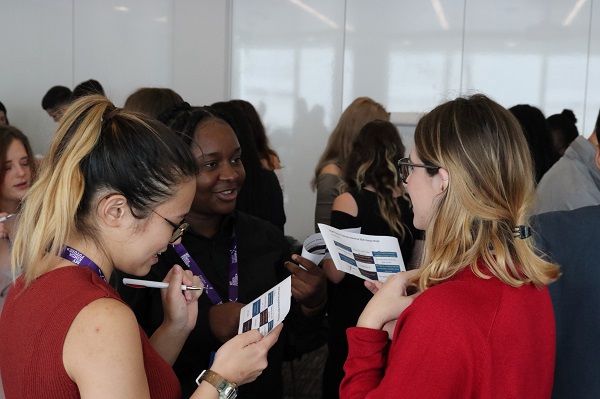MyKindaFuture tutor, Tash Moore delivers sessions to engage school students with the reality of working life. Here she shares some of her experiences that are helping employers to better connect in the classroom.
It’s not uncommon for a young person to feel distance between themselves and the world of work. Although someone may understand the semantics of a job role, it’s impossible to know what it’s like to actually be in that role: what they do, what their working environment looks like, who they work with, what a typical day or week may entail, and so forth.
My job is to help them to visualise themselves working for a particular organisation by bringing company values to life, making the workplace more tangible and less alien.
I’ve been delivering workshops that engage school students since 2005, and I have run over 300 sessions. What is great about working with so many companies from varying sectors is that you never feel that you’re rinsing and repeating. Every session is unique because you have different individuals with differing needs and expectations from the sessions. Variety is super helpful in terms of delivery.
What sector do you think students don’t understand and why?
To be honest, most sectors! If you’ve spent your entire education inside a classroom, you cannot ever truly understand what it’s like in the real working world.
One of the greatest struggles in education is how to contextualise learning outside of the classroom, or put another way, how can we help students to understand how their learning relates to the world of work?
To engage school students we achieve this in two ways. Firstly, we take people out of school and into the workplace to provide unique and valuable immersive learning experiences. Secondly, we connect young people with employers in their learning environment, helping them to see and understand what it would be like to be part of a particular company or sector.
What is the best employer experience that you have delivered to engage school students?
For the last six years I’ve felt privileged to work with the international law firm, Allen & Overy. Its Smart Start initiative is about to enter its eleventh year and the impact it has had on young people from disadvantaged backgrounds is truly inspiring.
Part of the programme involves a mentoring system, which has an incredible impact. It has opened the door for so many participants to courses of study and industries that have completely changed their career paths.
I grew up in a disadvantaged area that did not have access to any of the opportunities that we deliver at MyKindaFuture. It’s great to see so many employers reaching out to young people now with life-changing opportunities.
What is the most challenging session that you have run?
Working on the Army campaign was interesting because the students would always ask challenging comments about combat. The most commonly asked question was, ‘have you ever killed anyone?’ However, the aim of this campaign was to show students the scope of roles available (over 70!), particularly those relating to STEM careers.
The Army reps would always answer very diplomatically and by the end of the workshop, the post-event comments often referred back to how surprised they were by the variety of roles available. So, whilst it was disappointing that students had such a narrow view of what the Army do, it was great to see that the intended impact of the campaign was achieved.
What is the best example of a brand coming to life?
Deloitte created a fantastic resource called ‘Open the Curiosity Box’. It’s a puzzle that can be completed by utilising Deloitte’s core values. It also requires teamwork, and it’s fun to complete. Their branding is outstanding and this resource was simple in concept, and highly effective in practice.
What’s the worst thing that an employer can do? If we’re delivering a campaign that’s part of a diversity agenda, it can be a shame if the company is not representing itself in a diverse fashion. Also, talking in business jargon, using abbreviations and generalisations can widen the gap that students feel between themselves and a company or sector.
How do you build a relationship with teachers?
Teachers trust our level of expertise and they’re always grateful for opportunities that enable their students to engage with employers. As tutors, it’s about giving them a clear brief as to what the event entails, managing their expectations, facilitating networking opportunities between teachers and employers and delivering the best possible experience for their students.


0 Comments